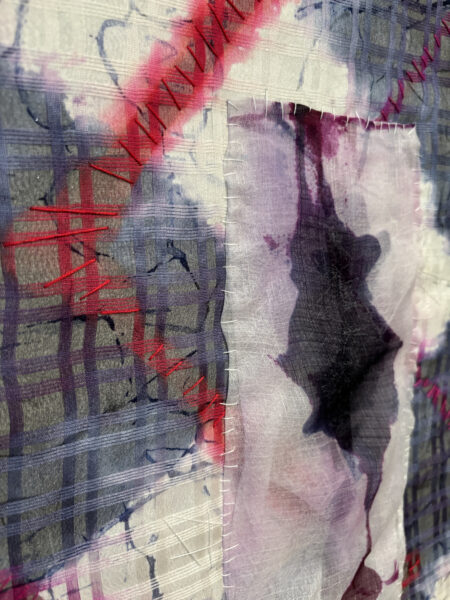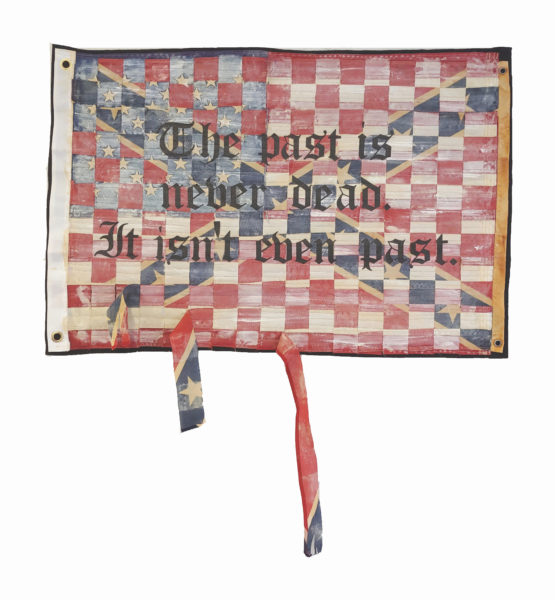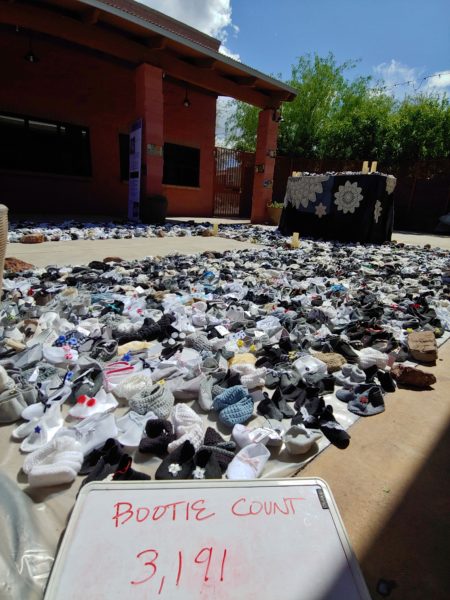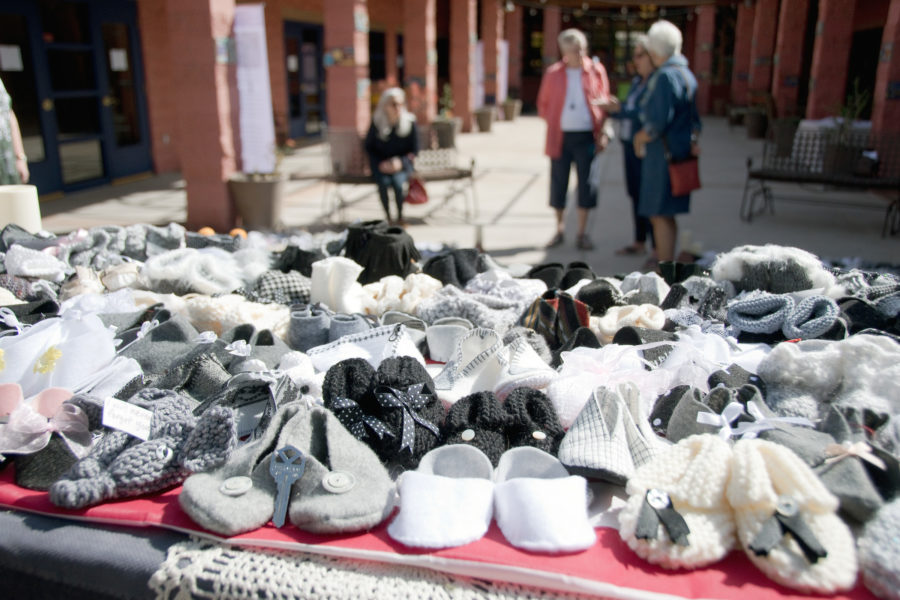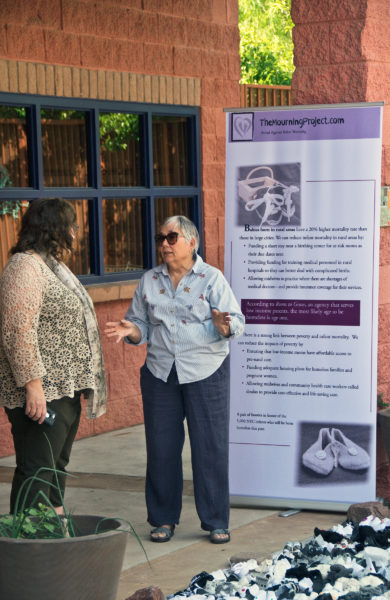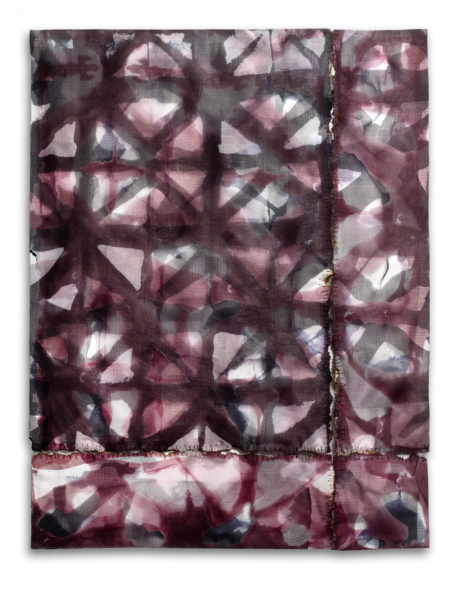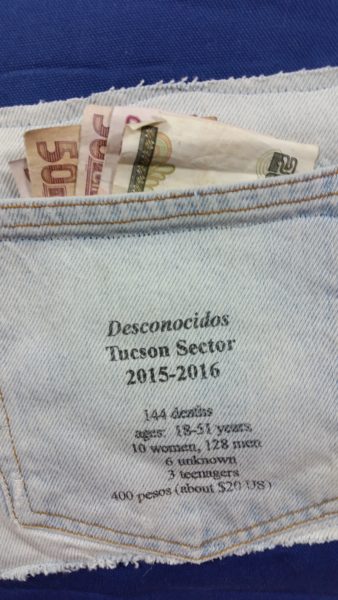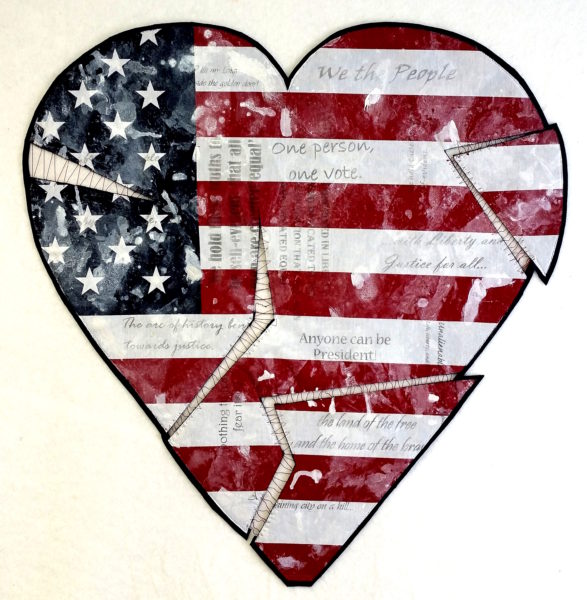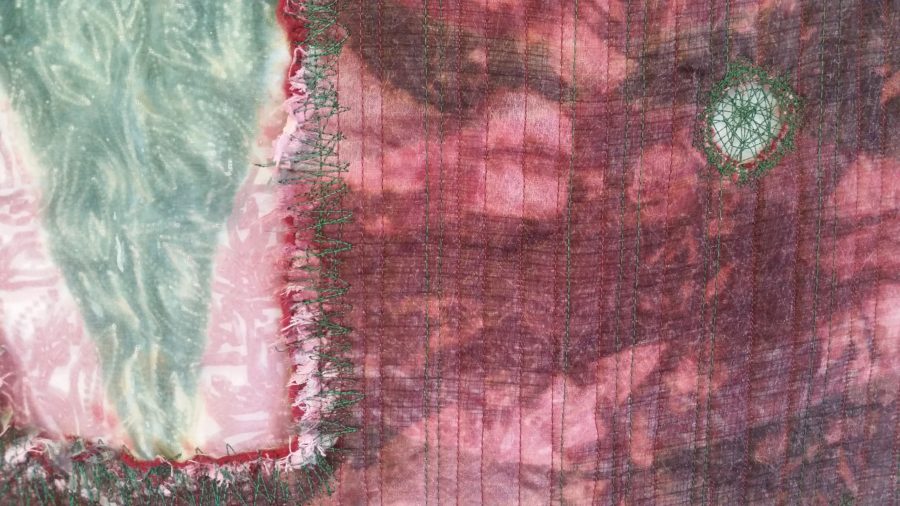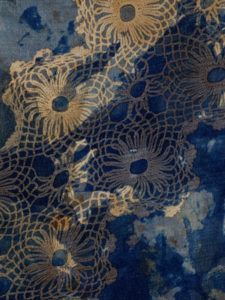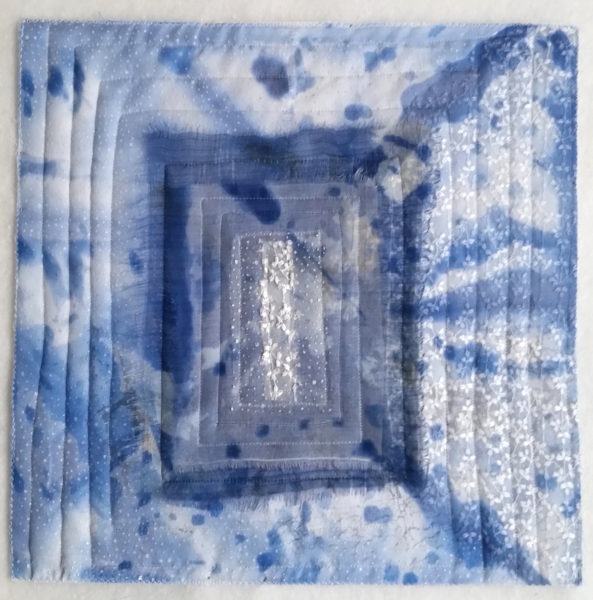

My Where Do We Go From Here? series explores way-finding in a chaotic world. I take Japanese shibori hand-dying techniques and reinterpret an old art form for contemporary times. See this work while it is on tour at the Art Cloth Network travelling exhibition, ReVision. It is layered hand-dyed silk fabrics with hand-stitching.


